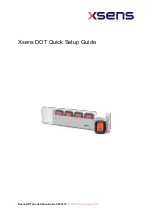
Precautions to Be Taken when
Transferring Messages
• If a program message that does not contain a query
is sent, the next program message can be sent at
any time.
• If a program message that contains a query is sent,
a response message must be received before the
next program message can be sent. If the next
program message is sent before the response
message is received in its entirety, an error occurs.
The response message that was not received is
discarded.
• If the controller tries to receive a response message
when there is none, an error occurs. If the controller
tries to receive a response message before the
transmission of the program message is complete,
an error occurs.
• If a program message containing multiple message
units is sent, and the message contains incomplete
units, the instrument attempts to execute the ones
that are believed to be complete. However, these
attempts may not always be successful. In addition,
if the message contains queries, the responses may
not be returned.
Deadlock
The instrument can store at least 64 KB of messages
in its transmission and reception buffers (the number
of available bytes varies depending on the operating
conditions). If both the transmit and receive buffers
become full at the same time, the instrument will
no longer be able to operate. This state is called a
deadlock. In this case, operation can be resumed by
discarding response messages.
Deadlock will not occur if the program message
(including the <PMT>) is kept below 64 KB.
Furthermore, deadlock never occurs if a program
message does not contain a query.
16.1.3 Commands
Commands
There are three types of commands (program headers)
that are sent from the controller to the instrument. They
differ in their program header formats.
Common Command Header
Commands that are defined in the IEEE 488.2-1987
are called common commands. The header format of
a common command is shown below. An asterisk (*) is
always placed in the beginning of a command.
*
<Mnemonic>
?
An example of a common command
*CLS
Compound Header
Dedicated commands used by the instrument are
classified and arranged in a hierarchy according to
their functions. The format of a compound header is
shown below. A colon (:) must be used to specify a
lower hierarchy.
:
<Mnemonic>
?
:
Example of a compound header
:SENSe:MODE
Simple Header
These commands are functionally independent and do
not have a hierarchy. The format of a simple header is
shown below.
<Mnemonic>
?
:
Example of a simple header
:STARt
Note
A <mnemonic> is a character string made up of
alphanumeric characters.
16-3
IM 765601-01E
Communication Commands
3
2
1
4
5
6
7
8
9
10
11
12
13
14
15
16
17
18
App
Index
16.1 Program Format
















































